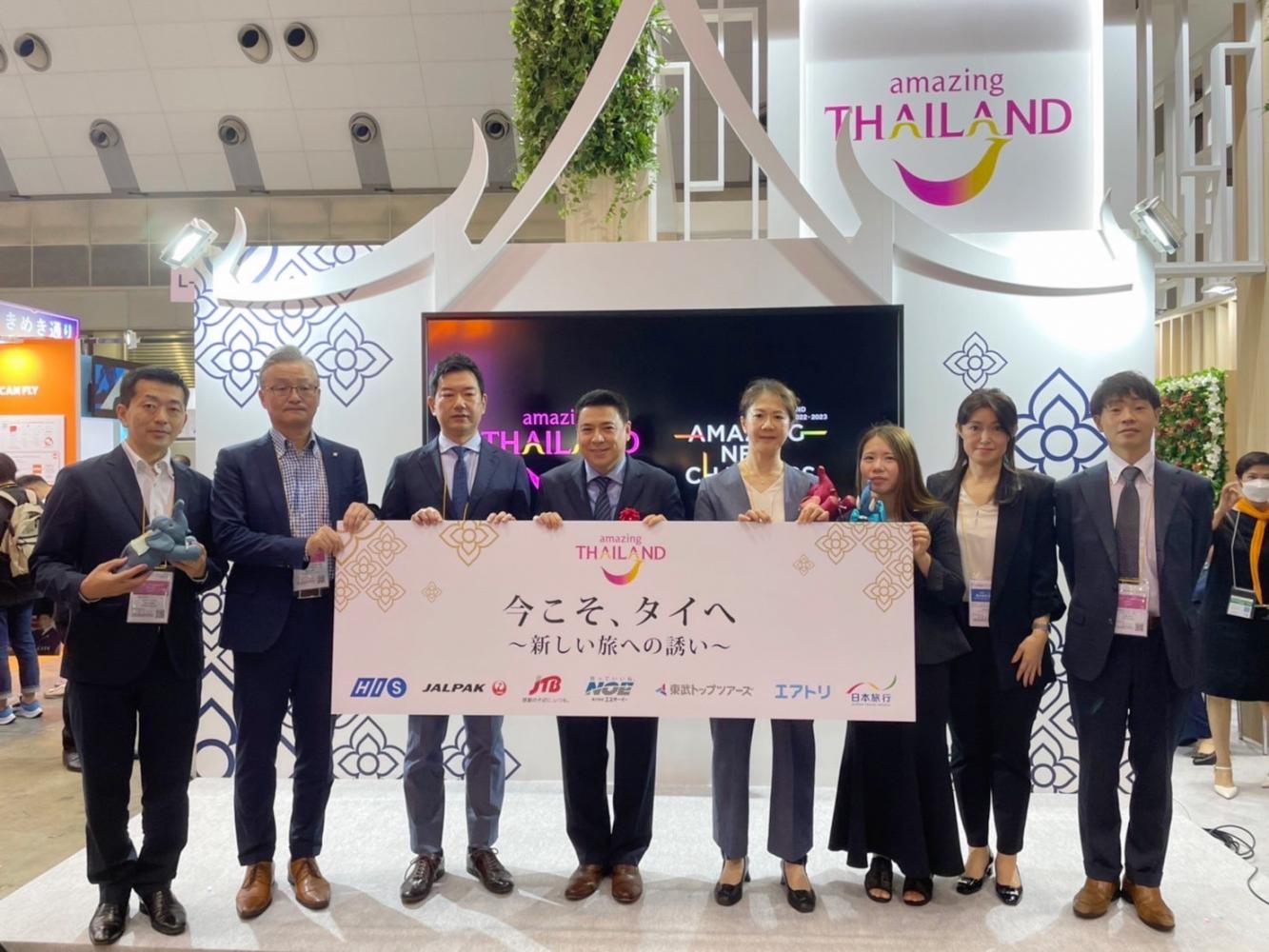
As currency depreciation in Japan looms large, Thai tourism operators want to capitalise on pent-up demand in the final quarter by partnering with tour agencies to fill up 45% of the available airplane seats.
Tourism Authority of Thailand (TAT) governor Yuthasak Supasorn said one trend of regional post-pandemic travel will be two-way tourism, particularly for Japan and Thailand, which are the top destinations for tourists from each country.
Despite higher travel costs attributed to inflation and weak currencies in Thailand and Japan, travel demand remains strong in both countries, with a 55.5% increase in airplane seats in the third quarter from the previous quarter. The main reasons cited were the cancellation of the Thailand Pass system and easier entry to Japan for tour groups.
Planned seat capacity for the fourth quarter grew by 34.3% from the third quarter, totalling 460,704 seats, of which Tokyo-bound flights made up 74% of the total, followed by Osaka at 17% and Fukuoka at 9%.
Mr Yuthasak said the agency will intensify its promotional campaigns to accelerate demand in the last three months of the year by introducing a partnership campaign called "It's time to go to Thailand", which will create momentum for next year.
TAT aims to bring at least 1.25 million Japanese tourists to Thailand in 2023, generating 75 billion baht.
Under this campaign, he said Thailand must increase Japanese travellers' average spending per trip, which remains relatively low at only 6,400 baht, the lowest among Northeast Asian markets.
The TAT plans to urge seven large tour operators to persuade tourists to spend more days in Thailand, mainly targeting corporate trips, the elderly, solo travellers, female friends and family members, and those who enjoy outdoor activities.
Extending trips will be rewarded with discounts on tourism products like hotels and spas, said Mr Yuthasak.
"With a historically weak yen, there's an obstacle to boosting tourism expenditure, so we have to entice them to spend more time in order to make their first outbound trips in two or three years worth it," he said.
Thanet Phetsuwan, TAT deputy governor of marketing for Asia and South Pacific, said the agency is also leading 10 Thai tourism operators on a trip to Tourism Expo Japan 2022 between Sept 22-25 at Tokyo Big Sight.
The event is the first on-site tourism trade event held in the country since the start of the pandemic.
He said with 1.12 million plane seats available in 2022, Japanese travellers will gradually return to Thailand, with 350,000 visitors expected this year.
As of Sept 20, 166,709 Japanese tourists have visited Thailand this year, which is a far cry from 2019 when 1.8 million arrived.
Ryoko Yonemori, assistant manager for overseas travel promotions at Nippon Travel Agency, said when the yen started falling earlier this year, the Japanese market was affected as travellers were worried about surging costs from the depreciation of the currency.
However, improved sentiment is expected by the end of this year as people adapt to the situation, she said.
"Airfares dramatically surged from around ¥60,000-70,000 for an economy trip to around ¥100,000, mainly attributed to the fuel surcharge, which is now the most expensive cost for an air ticket," said Ms Yonemori.
